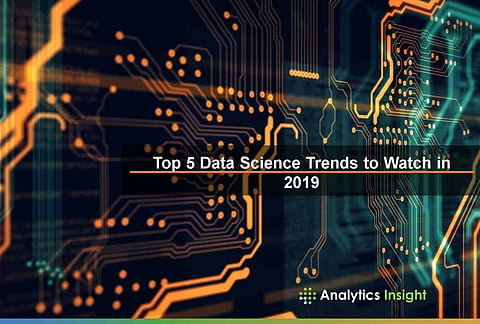

Data science covers a vast network of topics under its umbrella including Deep learning, IoT, AI and various others. It is a comprehensive amalgamation of data inference, analysis, algorithm computation and technology to solve multifaceted business problems. With the unabated increasing popularity of data science and new technological and sophisticated developments, the applications and uses of data science are increasing by leaps and bounds over time. The following trends in this field are expected to continue in the coming year as well.
With the plethora of data being generated every second, and the pace being accelerated by catalysts like IoT, the issue of data security will become more and more important. It can be reasonably expected that more data regulatory schemes will follow in 2019. Data regulatory events like for example GDPR (European General Data Protection Regulation), which was enforced on May, 2018 regulated data science practice by setting certain boundaries and limits on collection and management of personal data. Such regulatory activities will hugely impact future predictive models and different analytic exercises. Moreover, the increasingly sophisticated cyberattacks have mandated the need for a less vulnerable data protection scheme. The high-profile data breaches expose our inadequacy in this aspect. So many more new protocols and procedures to secure data are likely to emerge in 2019.
The buzz created by AI is unlikely to die down in the coming year. We are in the nascent and initial stage of AI, and the following year will see the more advanced application of AI in all the fields. Harnessing AI will still remain a challenge. More intelligent apps will be developed using AI, Machine Learning and other technologies. Automated machine learning (ML) will become common and it will transform data science with better data management. There will also be the development of specific hardware for training and execution of deep learning. Incorporation of AI will enhance decision-making and improve the overall business experience. Applications and other services will increasingly rely on AI to improve the overall experience. All the new applications will incorporate some form of AI in their program to improve their functioning. So, the number of intelligent apps will be on the rise. Intelligent things that are smarter versions of regular gadgets will continue to flood the market.
Digital representations of real-life physical objects powered by AI capabilities will become widespread. These technologies will be used to solve real-life business problems across companies all over the world. The pace of real-time innovations will also accelerate with advanced technologies. ML and neural network design will be extensively used in all the applications. Augmented reality (AR) and virtual reality (VR) applications are already giving way to massive transformations. More breakthroughs in these areas are likely to occur in the coming year and the human-machine interaction is deemed to improve because of this. Human expectations and experiences from digital systems and machines will rise.
With further growth of IoT, edge computing will increasingly become popular. With thousands of devices and sensors collecting data for analysis, businesses are increasingly doing more analysis and data processing close to the source of origin. Edge computing will be on the rise to maintain proximity to the source of information. Issues related to bandwidth, connectivity and latency will be solved through this. Edge computing along with cloud technology will provide a coordinated structure that simulates a paradigm of the service-oriented model. In fact, IDC predicts, "By 2020, new cloud pricing models will service specific analytics workloads, contributing to 5x higher spending growth on cloud vs. on-premises analytics."
Blockchain is a major technology that underlies cryptocurrencies like Bitcoin. It is a highly secured ledger and has a variety of applications. It can be used to record a large number of detailed transactions. Blockchain technology can have far-reaching implications in terms of data security. New security measures and processes emulating the blockchain technology can appear in the coming year.
With such trends deemed to prevail in the coming year, the future for innovation and business looks bright. Like Big Data, Data Science will witness massive use and development in the upcoming year. The digital and physical world will increasingly get intertwined. Digital experience will get more intricately incorporated in human experiences. With these leading trends which are expected to persist, the field of data science is expected to see exposure and development beyond measure.
Join our WhatsApp Channel to get the latest news, exclusives and videos on WhatsApp
_____________
Disclaimer: Analytics Insight does not provide financial advice or guidance on cryptocurrencies and stocks. Also note that the cryptocurrencies mentioned/listed on the website could potentially be scams, i.e. designed to induce you to invest financial resources that may be lost forever and not be recoverable once investments are made. This article is provided for informational purposes and does not constitute investment advice. You are responsible for conducting your own research (DYOR) before making any investments. Read more about the financial risks involved here.
